Fix Hot Tub Air Locks: A Simple Guide for Stress-Free Soaks
July 31th, 2024
July 31th, 2024
A hot tub is a sanctuary of relaxation, where the gentle whirl of water promises to melt away stress. But what happens when this serene experience is interrupted by an unexpected mechanical hiccup? When air finds its way into the plumbing, it can result in what's known as an air lock, a common yet perplexing issue for hot tub owners. Picture yourself, ready to unwind after a long day, only to find that the jets are sputtering or have halted altogether. This pesky problem can swiftly dampen spirits and disrupt your soak.
My friend Tom once faced this very issue, just days before a planned backyard gathering. His hot tub, usually the centerpiece of social gatherings, was rendered unusable by a stubborn air lock. Determined not to let this spoil the party, Tom embarked on a quest to free the trapped air, armed with a few simple tools and a bit of patience.
In essence, understanding and fixing an air lock doesn't require you to be a professional. With a clear guide, a few household items, and a little effort, you can restore your hot tub to its bubbling glory. By learning to troubleshoot this issue, you ensure uninterrupted enjoyment of your personal oasis, keeping both stress and mechanical woes at bay.
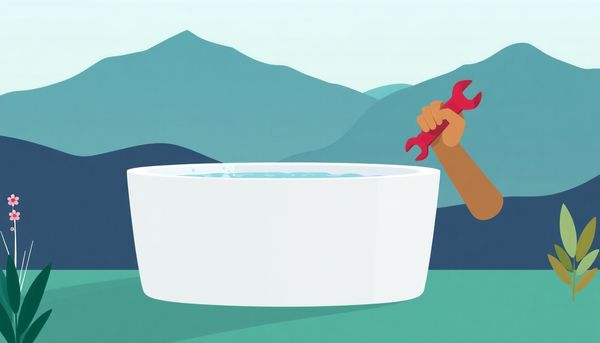
So, you’re staring at your silent hot tub, wondering how to battle the invisible enemy known as the air lock. It's a common hiccup, especially after seasonal maintenance. Here’s a straightforward approach that feels more like a gentle nudge than a wrestling match with your spa.
First, locate the pump. It's often under a panel on the hot tub's side, so be prepared to get a little cozy with your tub's mechanics. Once you have access, look for the bleeder valve. This small, usually plastic, valve is your ally in this endeavor. Gently twist it open. You might hear a faint hissing sound, which is the trapped air escaping—kind of like your hot tub letting out a deep sigh.
While the air is being expelled, keep an eye out for water beginning to trickle from the valve. That’s your sign that the stubborn air has found its way out and water is reclaiming its position. Once you see a steady flow, tighten the valve back up. Now, try switching on the jets. If all goes well, you’ll be rewarded with the familiar gurgling and bubbling of your spa springing back to life.
But every now and then, even the bleeder valve might not suffice. When that happens, you might need to call in professional reinforcements. Until then, enjoy the satisfaction of having tackled this watery puzzle head-on.
When you first encounter that eerie silence after turning on your hot tub jets, it can be quite the head-scratcher. There's no soothing roar or gentle bubbling, just an unsettling stillness. This void is often the first indicator of an air lock, a sneaky culprit lurking unnoticed until you try to relax after a long day. A telltale sign of this phenomenon is when you power up the jet system, and instead of a vigorous cascade, you get... nothing. Not a drop of water surges forth, leaving you puzzled and slightly irked.
During maintenance routines, especially after draining and refilling, air locks are most prone to strike. You might observe inconsistent water pressure or hear a faint gurgling—these auditory clues are like whispers of trouble from within your tub. Such symptoms are your cue to take action before more serious issues, like a pump failure, arise.
From my own experience, I once spent a frustrating evening blaming an uncooperative spa cover, only to realize that the problem was an air lock. It taught me the value of recognizing these signs early. Identifying these symptoms promptly not only saves time but also protects your equipment. By understanding the peculiarities of an air-locked system, you can quickly move to the solution phase, ensuring your tub is back to bubbling bliss in no time.
Encountering an air lock in your hot tub can be as frustrating as a rainy day at the beach. Yet, there's a simple technique to get things bubbling again: the Prime the Pump Method. This approach is akin to coaxing a shy cat out from under the couch—gentle yet effective.
Begin with the control panel, which serves as your trusty sidekick in this endeavor. Set your hot tub pump to its lowest speed, as this prevents a forceful surge that might exacerbate the situation. Turn the pump on and off in short bursts of about 15 to 30 seconds. This intermittent action persuades the air bubbles trapped in the system to rise and escape, allowing water to flow through the jets unimpeded.
Keep an ear out for the subtle changes in sound from the pump. A steady hum means progress, indicating that the water is reclaiming its rightful path. You might notice small air bubbles surfacing, a sure sign that your strategy is working. Repeat this on-off cycle up to three times, giving your pump a brief rest in between to avoid overheating.
If successful, you'll witness the satisfying gush of water through the jets, a clear signal that your hot tub is ready to offer its soothing embrace once more. Should this method prove elusive, don't be discouraged; there are other tactics to try, but often, a little patience and persistence are all it takes to win this watery tussle.
No one enjoys getting elbow-deep into hot tub repairs, but sometimes it's necessary to banish a pesky air lock. Enter the bleeder-valve technique, a crafty maneuver that can swiftly reintroduce tranquillity to your watery haven. With a few tools and a bit of patience, you’ll be soaking in bliss in no time.
Start by locating the bleeder valve on your pump, typically a small knob or screw. It's designed to release trapped air from the system. Armed with a trusty wrench or screwdriver, gently loosen the valve while keeping an eye on the escaping air. You might hear a faint hiss, like air escaping from a balloon. That’s your sign that the process is underway.
Keep the valve open until water starts to trickle out smoothly—this means that the air has been successfully evacuated, and water is reclaiming its rightful place in the system. But handle this process with care; over-tightening once finished can lead to a leak, while leaving it too loose may invite unwanted air back in.
I remember a time when, after a long workweek, I eagerly awaited a soak, only to be thwarted by stubborn jets. Employing the bleeder-valve technique not only resolved the issue but also granted me a newfound appreciation for a simple yet effective solution. With this strategy in your toolkit, your hot tub air lock woes are well in hand.
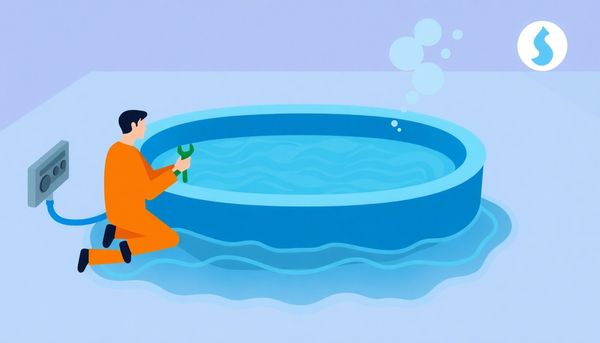
When you face a hot tub air lock, priming the pump is like hitting the reset button on a stubborn gadget. Starting with the simplest approach, ensure your hot tub is filled to the appropriate water level. As you fill the tub, pay attention to the waterline ensuring it surpasses the jets. This is crucial because an inadequate water level can exacerbate the air lock issue.
Next, locate the control panel and set the pump to high speed. This might sound like a basic step, but it often does the trick. The sudden surge of power can sometimes nudge the trapped air out of the way, allowing water to flow through the jets once more. If the jets start sputtering to life, you’re on the right track. It's a sign that you’re successfully tackling the air lock.
In scenarios where the jets remain stubbornly silent, it might be time to try a manual touch. Turn off the power and gently loosen the bleeder valve on the pump. You might hear a hiss, much like releasing air from a balloon. This sound is your cue that trapped air is escaping. Once a steady trickle of water emerges, tighten the valve and restore the power.
With these steps, your spa should be back in action, ready for a relaxing soak. It's like giving your hot tub a well-deserved breath of fresh air, ensuring no more silent jets interrupt your leisure time.
When the jets refuse to cooperate, transforming your hot tub into nothing more than a fancy footbath, it’s a sure sign that an air lock might be the culprit. Recognizing the symptoms of an air lock is crucial, as it can save you both time and potential headaches. Start by observing the behavior of the jet system. If the jets are non-responsive or sputtering without any water flow, it’s likely that air has sneaked into the plumbing.
In my own experience, the first time I encountered an air lock, it caught me off guard after a routine cleaning. The jets gurgled, almost like they were trying to muster up the energy to work but fell short every time. This was a clear indication that air was trapped in the system.
Another telltale sign is the sound emanating from the pump itself. If it seems louder than usual, or makes a whining noise, it's a signal that the pump is working overtime without water. Left unchecked, this can lead to overheating and damage. A visual inspection can also help; if you notice any bubbles forming in the water, it means air is trying to escape through the jets but is blocked.
These symptoms are your hot tub's way of crying out for help. By identifying them early, you can prevent further damage and quickly restore your hot tub to its bubbly glory.
When faced with the stubborn silence of a hot tub air lock, there’s no need to break out the tool kit just yet. A few simple steps, akin to giving your hot tub a gentle nudge, can often resolve the issue without much fuss. Begin by ensuring your tub is filled to the correct level; sometimes, the simplest oversight creates the biggest roadblocks. Then, turn on the jets for 15 to 20 seconds and switch them off. Repeat this process several times, and you may notice the air bubbles begin to release. This is akin to giving your tub a good hiccup, letting trapped air escape as water gradually fills the void.
Another approach involves loosening the top fitting slightly on the pump to allow trapped air to find an escape route. Be cautious, though—only a quarter turn is necessary. You don't want to open it too far and risk a waterworks show in your backyard. This technique lets air trickle out while the water finds its rightful path, ensuring your pump doesn't run dry.
Sometimes, a little patience goes a long way. Allowing the system to sit for a couple of minutes between attempts gives air bubbles time to dislodge naturally. But if these easy fixes don't break the lock, it might be wise to consider a more hands-on approach or seek expert assistance. With these techniques, you’re well on your way back to those blissful soaks without a hitch.
When you’ve exhausted your DIY options and that stubborn air lock refuses to budge, reaching out to a professional can be your best bet. Professionals come equipped with the expertise and tools needed to diagnose and resolve issues that may be beyond the scope of a home fix. They’re adept at identifying subtle problems that could be contributing to your hot tub’s woes, ensuring that no underlying issue is left unchecked.
Engaging a professional doesn’t just bring peace of mind; it often saves time and money in the long run. Consider the potential cost of replacing a pump that’s been damaged from running dry. A technician can not only address the current air lock but also offer maintenance tips and insights to help prevent future occurrences. This means more time enjoying your hot tub and less time troubleshooting.
If you’re feeling uncertain about handling the bleeder valve or if repeated priming attempts don’t deliver results, calling a specialist can prevent further damage. Their fresh perspective can unearth issues not immediately apparent to the untrained eye, such as small leaks or blockages that might escalate if ignored.
Ultimately, while DIY fixes can be rewarding, knowing when to consult professional help is crucial. It ensures your hot tub remains a blissful retreat rather than a source of frustration.
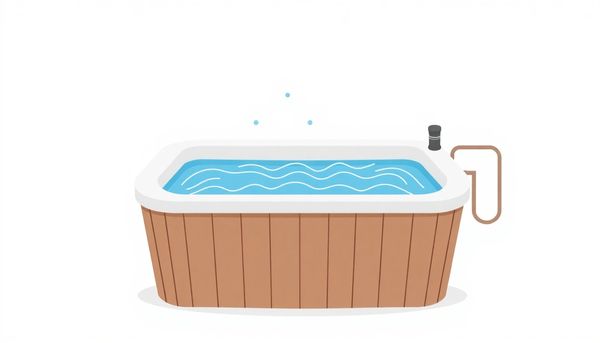
Ah, the dreaded hot tub air lock—a silent saboteur known to turn even the most luxurious soak into a tepid disappointment. When water refuses to flow from your jets, it's time for a little trick called "burping" your hot tub. This isn't about making your spa emit anything gaseous; rather, it’s about coaxing trapped air out of the plumbing so water can once again flow freely.
Start by powering down the tub completely. Unplug it—trust me, safety first. Next, locate the pump, usually nestled in a cozy nook just beneath your hot tub's skirting. Spot the bleeder valve, typically a small, screw-like fixture atop the pump. Gently turn it counterclockwise. You might hear a hissing sound, akin to a snake’s warning—this is the trapped air making its grand exit. Be patient and allow any remaining air to escape until you see water seeping out, signaling a successful burp.
Once the air has been fully expelled, tighten the bleeder valve and plug the tub back in. Fire up the jets and watch as they spring to life, celebrating their victory over the air lock. A few years ago, I dealt with this exact issue on a chilly autumn evening. It was only after the successful burp that warm water cascaded around me, transforming my frustration into sheer bliss. There’s a certain satisfaction in outsmarting a hot tub, don’t you think?
A hot tub air lock can be a sneaky little gremlin in your relaxation routine, and pinpointing the symptoms is your first step toward a fix. When your jets are quieter than a whisper, and the once-vibrant bubbles are absent, these are tell-tale signs of an air lock. It’s not just a matter of jets refusing to cooperate; there's a whole sneaky air pocket holding them hostage.
Upon switching on the pump, you might notice an unsettling silence or a low hum without the accompanying rush of water. This usually happens after refilling a recently drained tub. If you’ve cleaned your spa and the jets are still stubbornly silent, the culprit is likely that mischievous air trapped in the lines.
A personal experience comes to mind—after a deep clean, my own hot tub seemed to sulk, providing nothing but a frustrating lack of flow. The initial panic of a broken system quickly turned into a realization of an air lock issue. Armed with this knowledge, I was able to tackle the problem with a few simple steps.
Keep an ear out for unusual sounds from the pump too. A wheezy noise or erratic sputtering when you attempt to activate the jets can indicate that air is interrupting the usual flow. Recognizing these symptoms early saves both your sanity and your spa’s pump from potential harm. Understanding these signals can transform frustration into a straightforward fix, ensuring your hot tub returns to its bubbly glory.
Even the most luxurious hot tubs can be stubborn, especially when an air lock decides to crash the party. The term might sound like something out of a sci-fi movie, but it’s a simple concept: air gets trapped in your tub’s plumbing lines, preventing water from flowing as it should. Fixing this can be as easy as coaxing that stubborn air out of its hiding place and letting water take its rightful path.
Start by locating the pump housing, where the magic—or in this case, the blockage—happens. Many pumps come with a bleeder valve, which is your golden ticket to resolving the air lock. First, turn off the power to ensure safety. With a wrench or your hands, slowly open the bleeder valve. You should hear a hiss—like a soda being opened—indicating the escape of trapped air. Close the valve once water starts trickling out.
For those pumps without a bleeder valve, an alternative method involves toggling the jets. Turn them on and off a few times. This action pushes the air through the system, similar to how a hiccup might disrupt a conversation.
These methods may seem simple, but they often do the trick. However, if the air insists on staying put, calling in a professional might be your next step. With patience and a touch of persistence, your hot tub should soon return to its bubbly glory, ready to offer relaxation once more.
Addressing a hot tub air lock can be a straightforward process when you employ the bleeder-valve method. This technique, while slightly more hands-on than button-pushing, is invaluable for releasing trapped air and restoring the flow of water through your jets. Picture yourself on a quiet afternoon, gearing up to tackle this minor inconvenience with confidence.
Start by locating the bleeder valve, usually situated near your pump. Grab a wrench or pliers—not the kind of tools you need a workshop for, just everyday items you might find in a kitchen drawer. The valve resembles a small knob or screw cap, depending on your hot tub model. Make sure your hot tub is turned off to prevent any unexpected surprises.
Gently turn the valve counterclockwise, just enough to let the air escape. You’ll hear a hissing sound as the air exits, like the sigh of relief you’ll soon be feeling. Once water begins to trickle steadily from the valve, the air lock has been defeated. Tighten the valve back up, turn on your pump, and watch as the jets spring back to life, ready to offer you the soothing relaxation you seek.
With this simple maneuver, you not only save yourself the cost of a repair call but also gain a nifty skill to impress your neighbors at the next backyard gathering. Such practical knowledge transforms an afternoon task into a triumph.
Tackling a hot tub air lock can sometimes feel like wrestling with an invisible foe. When conventional methods like burping the spa don’t yield results, it's time to employ the bleeder-valve technique. This method may require a bit more effort, but it is often your best bet to coax stubborn air out of the system.
Begin by locating the bleeder valve, usually found near the pump or along the plumbing lines. Before proceeding, ensure the hot tub is unplugged to avoid any mishaps. You’ll need a wrench or a pair of pliers, depending on the type of valve. My neighbor once shared how he used a small adjustable wrench for this task and found it to be just the right tool. Slowly and carefully, loosen the valve. You might hear a hiss as air escapes—this is a good sign. It's the sound of victory as trapped air finds its way out, making room for water to flow properly through the jets.
Maintain a watchful eye; as soon as water begins to trickle from the valve, tighten it back up to prevent leakage. Engaging the bleeder-valve technique demands patience but delivers effective results. If the air lock persists, it may be wise to repeat the process, ensuring all trapped air makes its exit. This approach, with its tactile steps and satisfying resolution, becomes an invaluable skill for any hot tub enthusiast.
Spotting an air-lock in your hot tub can be like trying to solve a mystery with only subtle clues. It starts with that unsettling moment when your jets fall silent, refusing to perform their bubbly duty. Instead of the soothing stream you expect, there's a concerning absence of water flow. At this point, the heart of your spa—the pump—runs quietly but ineffectively, because it's trying to push water that just isn’t there.
A closer observation might reveal unusual vibrations or even rattling noises. These are your hot tub's cries for help, often signaling trapped air blocking the water’s path. Checking the water level can also provide insights; if it’s lower than usual, air might have sneaked into the system while the tub was being refilled. Another telltale sign is inconsistent water pressure from the jets. One moment, they might burst to life, only to falter again moments later.
I remember the first time my own hot tub faced this conundrum. Frustrated, I reached out to a seasoned spa technician who quickly pointed out the symptoms. With their guidance, it became clear how these subtle indicators were the hot tub's way of communicating its predicament. Recognizing these signs early can help you address the air-lock swiftly, preventing any potential damage to your spa's pump.
Priming the pump effectively is a critical step in tackling a hot tub air lock, and mastering this technique can save you from a costly repair or replacement. When the jets are silent and the water refuses to circulate, it's time for action. First, familiarize yourself with your hot tub’s control panel. Start by switching the pump to the highest setting available. This creates a burst of pressure, nudging the stubborn air pocket trapped in the lines to move out. Often, just a minute or two of this can dislodge the air and restore the flow.
Next, consider the old trick of manually releasing air. Locate the bleeder valve on the pump—usually a small, screw-like fitting. Carefully turning it counterclockwise will allow some water and, more importantly, trapped air to escape. This can be a bit messy, but it’s worth the trouble. Keep a towel handy to catch any splashes. Once you hear the hiss of air escaping, you know progress is being made.
Years ago, a friend faced this issue and, after a bit of trial and error, found that gently tapping the pipes helped. While unorthodox, the vibrations can sometimes assist in loosening the air block. Patience is key here; give each method ample time to work. By effectively priming the pump, you can ensure your hot tub returns to its bubbling, soothing self once more.
Dealing with a silent hot tub can be quite the conundrum, especially when you're eagerly anticipating a relaxing soak. An air lock in your hot tub, much like an unwelcome guest, can disrupt the entire experience. While it might sound daunting, resolving an air blockage doesn't demand a background in engineering or a hefty toolbox.
To begin with, familiarize yourself with your hot tub's bleeder valve. Located near the pump, this small but mighty component helps release trapped air. Turn off the hot tub, and then gently twist the valve open. You might hear a hiss or gurgling sound as the air escapes, signaling progress. Once water starts to trickle out, tighten the valve—this indicates that the water has reclaimed its rightful place in the plumbing lines.
Alternatively, your trusted garden hose can come to the rescue. Attach it to the jets and let water flow backwards into the plumbing. This reverse pressure can dislodge stubborn air pockets. Keep an eye on the water level to ensure nothing overflows.
For those less inclined to DIY, don't hesitate to ring up a professional. While it might mean parting with a few dollars, the peace of mind is often worth it. Ultimately, tackling a hot tub air lock requires a bit of patience and persistence, but the reward—a bubbly, soothing spa experience—is well worth the effort.
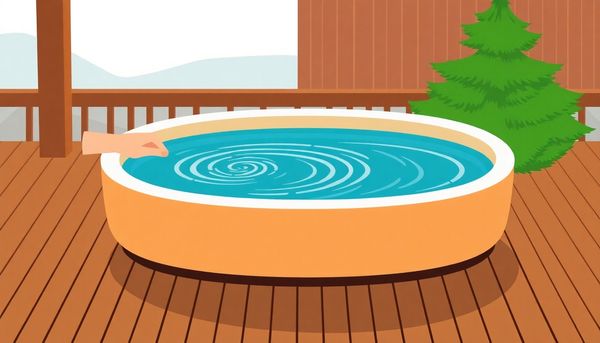
When your hot tub's jets are stubbornly silent despite your best attempts at revival, it might be time to acknowledge the need for professional intervention. Just as you wouldn't hesitate to call a plumber for a rogue faucet, seeking expert help for a hot tub's air lock can be equally wise. Turning to professionals not only saves time but can also prevent potential damage that might arise from well-intentioned but misguided DIY efforts.
Years ago, a friend of mine wrestled with a similar dilemma. After several unsuccessful attempts to purge the air lock from his spa, he decided to call a professional. The technician arrived, toolbox in hand, and within an hour had the hot tub humming back to life. It was a testament to the expertise that only years of experience can provide. The cost was a small price to pay for peace of mind and the assurance that the problem was truly resolved.
Moreover, professionals often offer insights into preventive measures, gleaned from countless hours spent troubleshooting similar issues. They'll not only fix the air lock but also share tips on maintaining optimal water flow and extending the lifespan of your hot tub. This kind of insider knowledge can be invaluable, especially if you're keen on minimizing future disruptions.
Remember, it's perfectly okay to resort to expert help. Doing so doesn’t mean you've failed; it means you're ensuring your investment remains a source of relaxation, not frustration.
When the jets stubbornly refuse to cooperate despite your best efforts, there’s no shame in reaching out for professional guidance. Tackling a hot tub air lock might seem straightforward, but sometimes, the problem runs deeper than an air bubble lodged in the system. In such cases, an experienced hand can save you both time and stress.
Consider the expertise that a seasoned technician brings to the table. Not only do they have a knack for identifying issues that might slip through an amateur's gaze, but they also come equipped with specialized tools that ensure the job is done right. A friend once shared how her hot tub woes were resolved within an hour after a professional visit, a feat she couldn't achieve after several attempts on her own.
Moreover, consulting a pro doesn't just benefit the immediate problem. They can offer insights into maintaining your hot tub that could prevent future air locks. They might suggest adjustments to your routine cleaning or refilling methods that you hadn't considered, securing a smoother experience in the long run.
While DIY efforts can be rewarding, knowing when to call for help is key to preserving your hot tub’s longevity. Expert advice often pays for itself by preventing costly repairs down the line, ensuring you return to your bubbling oasis sooner rather than later. So, when in doubt, remember that a professional’s perspective might be just what you need to get back to those relaxing soaks.
When faced with a stubborn hot tub air lock that refuses to yield to your best DIY efforts, it might be time to seek the expertise of a professional. Not only do they bring a wealth of experience, but they also have specialized tools and knowledge to tackle complex issues that might elude an everyday enthusiast.
Consider the peace of mind that comes with knowing your hot tub is in capable hands. Professionals can quickly diagnose whether there's an underlying issue beyond the air lock, such as a damaged pump or a hidden leak. This is invaluable, especially if you're not particularly familiar with the inner workings of your spa. Once, I hesitated to call a technician for fear of hefty charges but ultimately avoided a bigger fiasco when a minor crack in a pipe was discovered and fixed on the spot.
Engaging a professional also means you’ll get tailored advice on maintaining your hot tub, potentially preventing future air locks or other mishaps. While it might initially seem like a more expensive route, investing in a professional's insight can save you from costly repairs down the road. Always remember, sometimes the smartest fix is knowing when to call in someone who can handle the intricate dance between air and water with practiced ease.
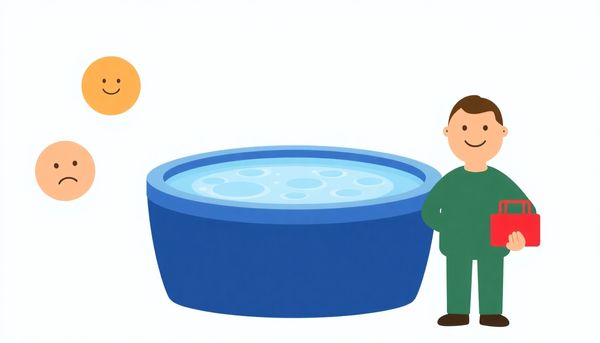
This article provided insights into maintaining your pool. Start your pool care journey today!
Want to become a pool maintenance expert? Our free Pool School course covers everything you need to know about pool care. From basic maintenance to advanced troubleshooting, you'll learn how to:
Join over 10,000 pool owners who have already transformed their pool care routine. Get started with our free Pool School course today!